Dear Zazie Lee, Here is today’s Lovers’ Chronicle from Mac Tag. Rhett
The Lovers’ Chronicle
Dear Muse,
© copyright 2020 mac tag/cowboy coleridge all rights reserved
a song for those of us…
on the walkin’ bridge
over the Canadian
the sights and sounds
of the High Plains twilight
comin’ on
the river,
what is left of it,
runs on
the days go away
time past
cannot come again
everything moves on
i shall return often
remember i am waitin’
does hope die
along with the wind
© copyright 2018 mac tag/cowboy coleridge all rights reserved
if not for muses,
this maddenin’, damned world
would not be worth fightin’ for
come lay with me
listen to the rain
feel the thunder
so many miles in the rear view
to find myself, to find a place
from whence i behold a vision
of verse piled upon verse for you
my feelin’s for you
are not like a star,
or a river
or a red, red rose
my feelin’s for you
are necessary
often of mind
as a pleasure
and as a part
sometimes,
sayin’ out loud
a name
a place called you
come to me
come to me is my request
© copyright 2017 mac tag/cowboy Coleridge all rights reserved
| Guillaume Apollinaire | |
|---|---|

Photograph of Apollinaire in spring 1916 after his shrapnel wound to the temple
|
|
Perhaps one of the foremost poets of the early 20th century, as well as one of the most impassioned defenders of Cubism and a
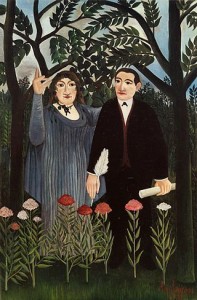
Muse Inspiring the Poet. Portrait of Apollinaire and Marie Laurencin, by Henri Rousseau, 1909
forefather of Surrealism. He is credited with coining the first term in 1911 for the new art movement, and of coining the latter in 1917 to describe the works of Erik Satie. Apollinaire wrote one of the earliest works described as Surrealist, the play The Breasts of Tiresias (1917), which was used as the basis for the 1947 opera Les mamelles de Tiresias.
Apollinaire became romantically involved with the French painter, Marie Laurencin who has often been identified as his muse.
Two years after being wounded in World War I, he died in the Spanish flu pandemic of 1918 at age 38. He was interred in the Père Lachaise Cemetery, Paris.
Verse
Sous le pont Mirabeau coule la Seine
Et nos amours
Faut-il qu’il m’en souvienne
La joie venait toujours après la peine
Vienne la nuit sonne l’heure
Les jours s’en vont je demeure
- “Le Pont Mirabeau” line 1
L’amour s’en va comme cette eau courante
L’amour s’en va
Comme la vie est lente
Et comme l’Espérance est violente
- “Le Pont Mirabeau” line 13
Passent les jours et passent les semaines
Ni temps passé
Ni les amours reviennent
- Nor days nor any time detain.
Time past or any love
Cannot come again. - “Le Pont Mirabeau” line 19
Mon beau navire ô ma mémoire
Avons-nous assez navigué
Dans une onde mauvaise à boire
Avons-nous assez divagué
De la belle aube au triste soir
- “La Chanson du Mal-Aimé” line 51Avec la femme qui s’éloigne
Avec celle que j’ai perdue
L’année dernière en Allemagne
Et que je ne reverrai plus
Voie lactée ô sœur lumineuse
Des blancs ruisseaux de Chanaan
Et des corps blancs des amoureuses
Nageurs morts suivrons-nous d’ahan
Ton cours vers d’autres nébuleuses
- “La Chanson du Mal-Aimé” line 56
Moi qui sais des lais pour les reines
Les complaintes de mes années
Des hymnes d’esclave aux murènes
La romance du mal-aimé
Et des chansons pour les sirens.
- “La Chanson du Mal-Aimé” line 91
Et ma vie pour tes yeux lentement s’empoisonne
- And for your eyes my life takes poison slowly.
- “Les colchiques” (The Saffrons), line 7
Je passais au bord de la Seine
Un livre ancien sous le bras
Le fleuve est pareil à ma peine
Il s’écoule et ne tarit pas
Quand donc finira la semaine
- “Marie”, line 21;
J’ai cueilli ce brin de bruyère
L’automne est morte souviens-t’en
Nous ne nous verrons plus sur terre
Odeur du temps brin de bruyère
Et souviens-toi que je t’attends
- “L’Adieu” line 1
Passons passons puisque tout passe
Je me retournerai souvent
Les souvenirs sont cors de chasse
Dont meurt le bruit parmi le vent
- “Cors de chasse” (Hunting Horns), line 9;
Calligrammes (1918)
Me voici devant tous un homme plein de sens
Connaissant la vie et de la mort ce qu’un vivant peut connaître
Ayant éprouvé les douleurs et les joies de l’amour
Ayant su quelquefois imposer ses idées
Connaissant plusieurs langages
Ayant pas mal voyagé
Ayant vu la guerre dans l’Artillerie et l’lnfanterie
Blessé à la tête trépané sous le chloroforme
Ayant perdu ses meilleurs amis dans l’effroyable lutte
Je sais d’ancien et de nouveau autant qu’un homme seul pourrait des deux savoir
- “La jolie rousse” (The Pretty Redhead), line 1; p. 133.
La beauté n’est la plupart du temps que la simplicité.
And today is the birthday of Rufino Tamayo (Rufino del Carmen Arellanes Tamayo; August 25, 1899 Oaxaca de Juárez, Mexico – June 24, 1991 Mexico City); painter of Zapotec heritage. Tamayo was active in the mid-20th century in Mexico and New York, painting figurative abstraction with surrealist influences.
Tamayo enjoyed portraying women in his paintings. His early works included many nudes, a subject which eventually disappeared in his later career. However, he often painted his wife Olga, showing her struggles through color choices and facial expressions. The shared difficulties of painter and wife can be seen in the portrait Rufino and Olga, circa 1934, where the couple appears broken by life’s obstacles.
Tamayo also painted murals, some of which are displayed inside Palacio Nacional de Bellas Artes opera house in Mexico City, such as Nacimiento de la nacionalidad (Birth of the Nationality, 1952).
From 1937 to 1949, Tamayo and his wife Olga lived in New York where he painted some of his most memorable works. He had his first show in New York City at the Valentine Gallery. He gained credibility thereby and proceeded to exhibit works at the Knoedler Gallery and Marlborough Gallery. While in New York, Tamayo instructed Helen Frankenthaler at the Dalton School Tamayo, while in the United States, attended important exhibitions which influenced his art mechanics. From Ingres to Picasso and French art exhibitions, Tamayo was introduced to Impressionism, Fauvism, and Cubism. Also, at an exhibition in Brooklyn in 1928, Tamayo came into contact with Henri Matisse, the French artist.
Gallery
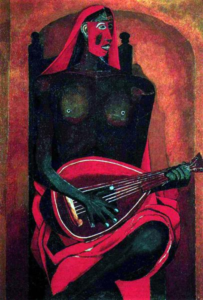
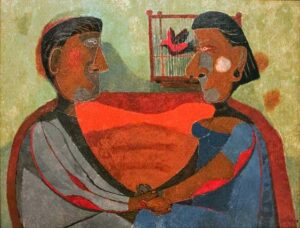
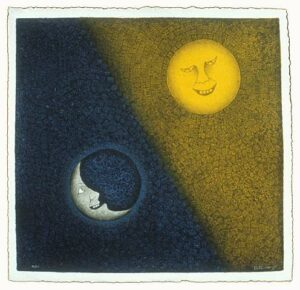
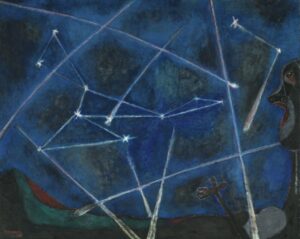
Mac Tag

No Comments on "The Lovers’ Almanac 26 August – come – verse by Guillaume Apollinaire – art by Rufino Tamayo"